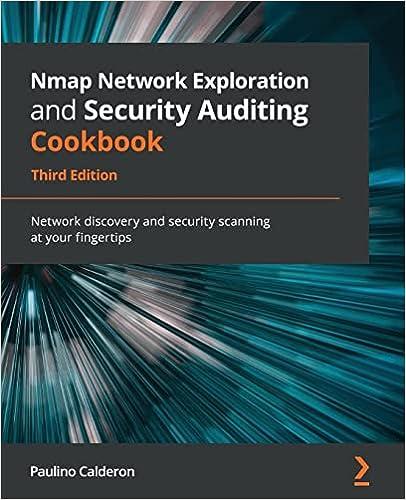Question
6. On January 1, 2022, Cao Company had a $1,200 credit balance in the Allowance for Doubtful Accounts account. Net credit sales for the year
6. On January 1, 2022, Cao Company had a $1,200 credit balance in the Allowance for Doubtful Accounts account. Net credit sales for the year were $400,000 and $7,400 of accounts receivable were written off as worthless during the year. No recoveries of accounts receivable previously written off were made during the year. Cao Company estimates that 2% of net credit sales for the year are uncollectible. The year-end financial statements on December 31, 2022 would show:
a) Bad Debt Expense with a debit balance of $15,400
b) Allowance for Doubtful Accounts with a credit balance of $1,800
c) Allowance for Doubtful Accounts with a credit balance of $8,600
d) Bad Debt Expense with a debit balance of $7,400
e) None of the Above
7. A 2-month, 10% note receivable is acquired from a customer in settlement of their existing account receivable of $6,000. The entry to record the acquisition of the note will include a:
a) Credit to Interest Revenue for $100
b) Debit to Notes Receivable for $6,100
c) Debit to Notes Receivable for $6,000
d) Debit to Notes Receivable for $6,600
e) None of the above.
8. A company purchased machinery for $40,000 on January 1, 2014. The machinery was estimated to have a useful life of 10 years and a residual (salvage) value of $10,000. Straight-line depreciation was used. On January 1, 2020, after six full years of use, management decided that the machinery would be retired on January 1, 2022 (i.e. at the end of 8 years of use). Under this revised estimate of useful life, the depreciation expense for the seventh year of use would be:
a) $6,000
b) $8,000
c) $11,000
d) $12,000
e) None of the above.
9. The journal entry to record the sale or disposal of a depreciable long-lived asset always includes:
a) Recording of a gain.
b) A debit to the Accumulated Depreciation account for the long-lived asset.
c) Recording of a loss.
d) A debit to the long-lived asset account for the carrying amount of the long-lived asset.
e) None of the above.
10. Echigoyen Company sells stoves carrying a three-year warranty. The liability for repairs on the stoves during the warranty period should be recorded:
a) In an equal amount each year over the three-year warranty period.
b) Three years after the stoves are sold when the warranty expires.
c) In the same accounting period when customers bring stoves in for repairs under warranty.
d) In the same accounting period when the stoves are sold.
e) None of the above.
Step by Step Solution
There are 3 Steps involved in it
Step: 1

Get Instant Access to Expert-Tailored Solutions
See step-by-step solutions with expert insights and AI powered tools for academic success
Step: 2

Step: 3

Ace Your Homework with AI
Get the answers you need in no time with our AI-driven, step-by-step assistance
Get Started


